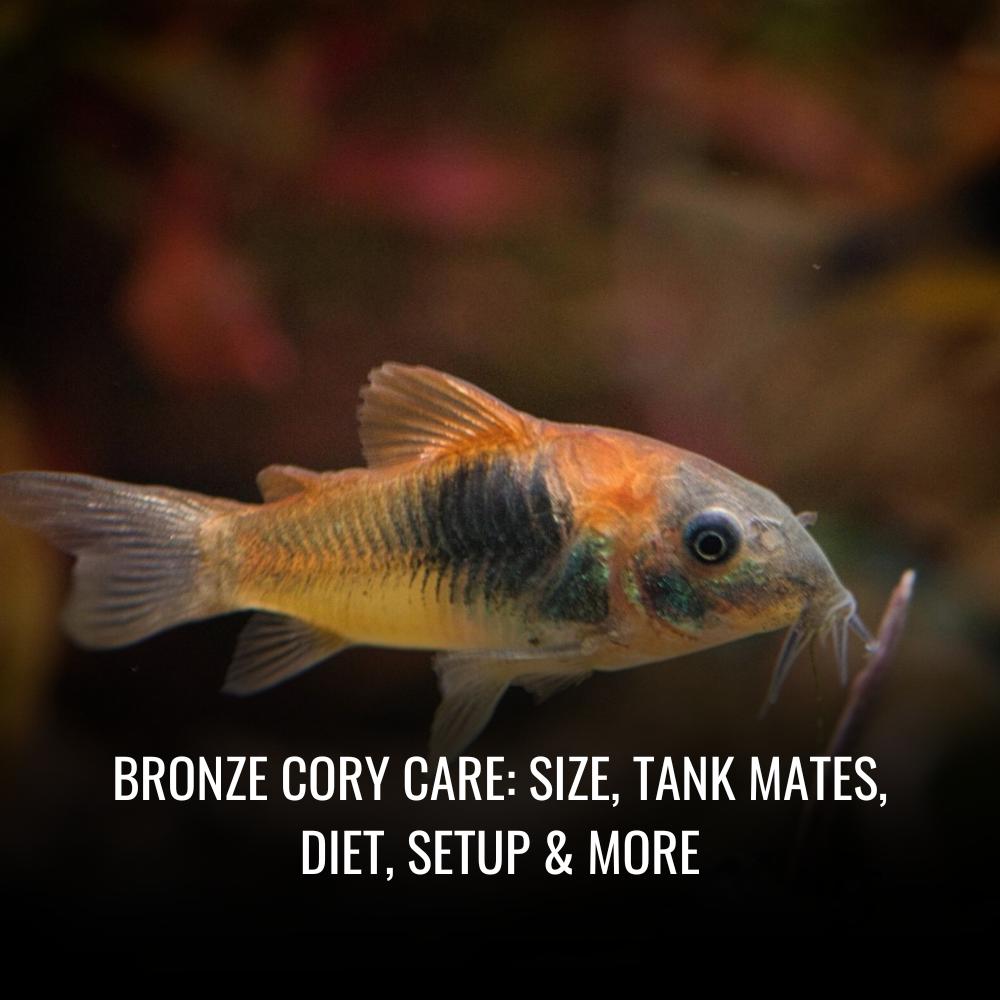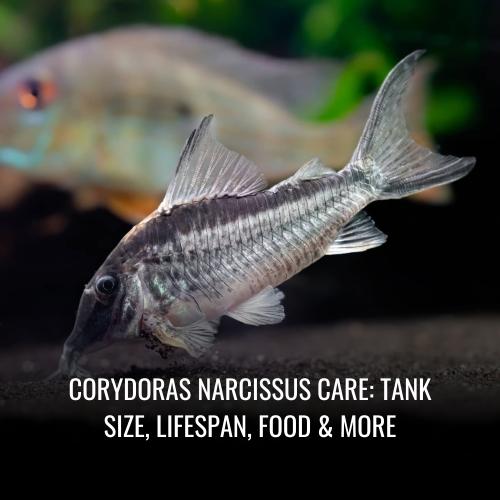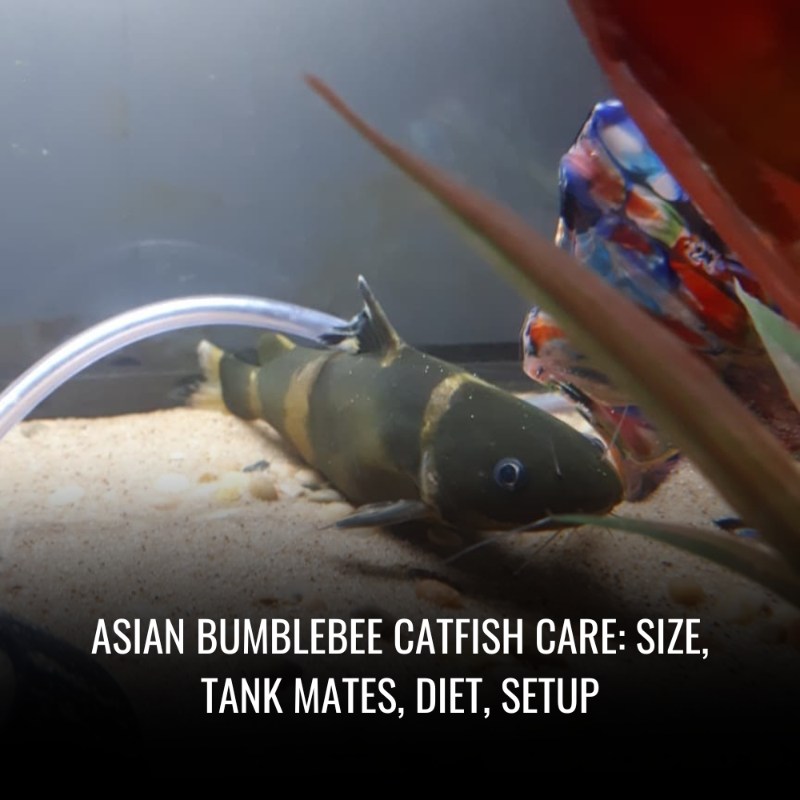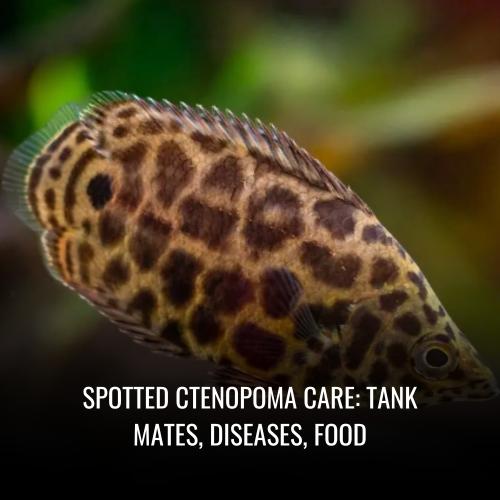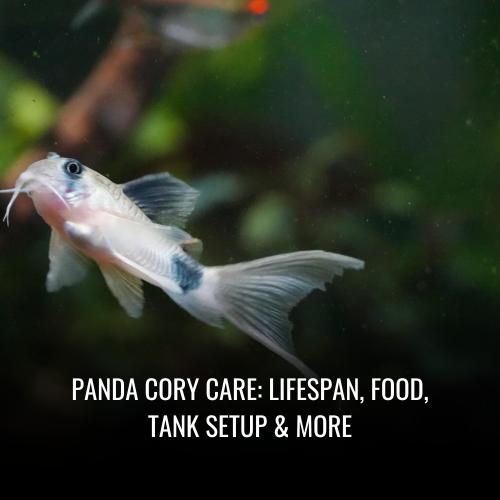False Julii Cory Care: Tank Mates, Size, Diet & Setup
This post contains affiliate links. As an Amazon Associate, we earn from qualifying purchases.
The False Julii Cory, sometimes misconstrued as Corydoras julii, is actually the Corydoras trilineatus. Native to South America, these diminutive catfish feature a captivating reticulated pattern comprising isolated dark spots and lines on a lighter backdrop, which adds charm to community tanks.
These armored catfish are hearty inhabitants, preferring soft substrates like sand or fine gravel to protect their sensitive barbels. They revel in the company of their own kind, exhibiting an endearing temperament both among themselves and with other tank denizens.
Here is a concise profile table for the False Julii Cory:
| Characteristic | Detail |
|---|---|
| Scientific Name | Corydoras trilineatus |
| Common Name | False Julii Cory, False Julii Cory Catfish |
| Family | Callichthyidae |
| Usual Size in Fish Tanks | Up to 2.5 inches (6.5 cm) |
| Recommended pH Range | 6.0 – 7.8 |
| Recommended Water Hardness (dGH) | 2 – 25°N |
| Recommended Temperature | 72 – 79°F (22 – 26°C) |
| Reproduction | Egg layer |
| Origin | Amazon River basin, South America |
| Temperament to Own Species | Peaceful, Social |
| Temperament to Other Fish Species | Gentle |
| Usual Place in the Tank | Bottom |
| Lifespan | 5 years with proper care |
| Tank Size Requirement | 20 gallons minimum for a small group |
| Filtration System | Required for clean and well-oxygenated water |
| Sexual Dimorphism | Females typically plumper |
| Substrate Cleaning | Will sift through substrate for food, aiding in cleanliness |
Remember to provide a spawning tank with ample plants or breeding mops if breeding is desired, and maintain a level of water hardness that keeps these creatures thriving and content. With the right care, False Julii Corys are a pleasurable addition to any freshwater aquarium.
Scientific Name
The Corydoras trilineatus is a fascinating species within the Callichthyidae family, often erroneously identified as its lookalike counterpart, the Corydoras julii. These South American natives hail from the biodiverse Amazon River basin, adding a slice of tropical intrigue to home aquariums. Discerning aquarists can distinguish the False Julii by carefully examining the thickness and distribution of their stripes and dots, which manifest in a unique reticulated pattern across their bodies.
Here is a quick profile rundown for quick reference:
| Characteristic | Detail |
|---|---|
| Scientific Name | Corydoras trilineatus |
| Family | Callichthyidae |
| Native Habitat | Amazon River, South America |
| pH Range | 6 – 8 |
| Temperature Range | 22-26°C (71.6 – 78.8°F) |
| Adult Size | Up to 2.3 inches |
| Lifespan | 3 – 5 years |
Average Size
The False Julii Cory, known scientifically as Corydoras trilineatus, boasts a modest stature that contributes to its charm within a community tank. Upon reaching maturity, these armored catfish, with their protective body plates, typically measure between 1.97 to 2.36 inches. On average, an adult False Julii Cory will be about 2.25 inches in length, but with optimal care and in the most favorable of conditions, they might stretch up to an impressive 2.5 inches.
Given their size, these peaceful inhabitants are tailor-made for life in a 30-gallon tank setting, providing enough room to explore and exhibit their sociable nature. The False Julii’s non-aggressive demeanor and its reliance on armor rather than confrontation make it an exemplary resident in a peaceful community aquarium. Here, amidst dense vegetation and a diverse group of tank mates, the False Julii can truly thrive.
| Size Detail | Measurement |
|---|---|
| Average Adult Size | 2.25 inches |
| Common Tank Size Range | 1.97 – 2.36 inches |
| Maximum Potential Size | 2.5 inches |
| Suggested Aquarium Size | 30 gallons |
Their compatibility and size not only ensure harmonious interactions with other species but also provide aquarists with an engaging and active aquarium dweller.
Lifespan
In the aquatic community, the False Julii Cory, or Corydoras trilineatus, is esteemed for its longevity, with a typical lifespan reaching up to 7 years under optimal care. Their cousins, True Julii Corys (Corydoras julii), also enjoy a considerable life expectancy of five years or longer, attesting to the enduring nature of these species. Aquarium enthusiasts can expect their C. trilineatus to brighten their tanks for about 5 years, assuming they are provided with the proper environment and care.
Breeding these delightful catfish can extend their presence in home aquariums with each breeding event resulting in the potential lay of up to 100 eggs. Inducing spawning is often achieved by simulating natural conditions with cooler water changes.
A dedicated aquarist can greatly influence the longevity of their False Julii Cory by implementing responsible aquarium practices and maintaining a nurturing environment. These armored catfish not only add movement and personality to the community tank but, with dedicated care, can become long-standing members of the aquatic family.
| Lifespan Detail | Years |
|---|---|
| False Julii Cory (C. trilineatus) Average | 5 |
| Maximum Potential Lifespan | 7 |
| True Julii Cory (Corydoras julii) Expectancy | 5+ |
Natural Habitat
The natural habitat of both the True and False Julii Corys finds its roots in the peaceful riverbeds of South America. These bottom-dwellers thrive in environments that emulate slow-flowing rivers and streams, which are often dense with vegetation and scattered with smooth stones, driftwood, and rocks, providing essential hiding spaces.
To summarily capture their habitat needs:
| Habitat Requirement | Aquarium Setup |
|---|---|
| Substrate | Soft sand or fine gravel |
| Tank Size | Minimum 20 gallons |
| Cover | Driftwood, rocks, plants |
| Grouping | Same-species groups |
Caring for the False Julii Cory involves mimicking the tranquility of their South American origins, ensuring a happy, healthy life beneath the water’s surface.
Appearance
The False Julii Cory, often confused with its rare counterpart the True Julii Cory (Corydoras julii), presents a captivating display in any aquarium with its distinguished reticulated pattern. This pattern comprises a network of fine, dark lines and dense spots across a silver or pale body, providing a striking contrast.
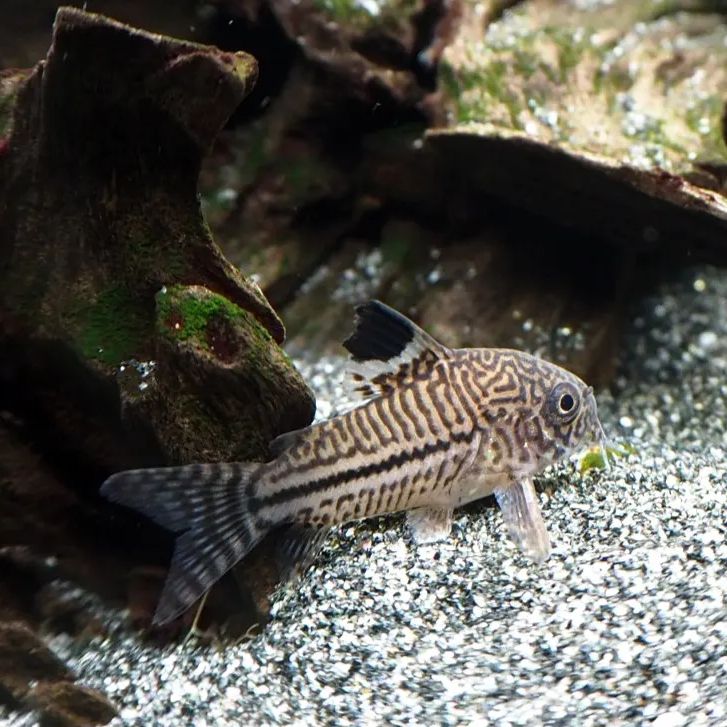
The False Julii, scientifically known as Corydoras trilineatus, usually exhibits a more pronounced and less intricate pattern compared to the true species, with darker, more isolated spots and a dark zigzag stripe along the lateral line. They have shorter heads and more rounded snouts than C. julii. These peaceful and social fish, a delight to any community tank, typically grow up to 2.5 inches, showcasing shorter barbels and an armor-like row of scales that contribute to their charming persona.
| Feature | Description |
|---|---|
| Body Color | Silver or pale with dark spots |
| Pattern | Reticulated with fine dark lines |
| Distinguishing Marks | Dark zigzag stripe along lateral line |
| Head Shape | Short with a rounded snout |
| Size | Up to 2.5 inches |
| Scale Armor | Visible as a row of overlapping plates |
Their intriguing appearance complements any well-planted community tank, making them a popular choice among aquarium enthusiasts.
Behavior & Temperament
False Julii Cory catfish are known for their friendly and peaceful demeanor, making them ideal residents for community tanks. These delightful armored catfish are not fin nippers and exhibit a sociable nature, preferring the company of their own kind to solitude. As inactive bottom dwellers, they engage in a harmonious existence with other tank mates and display fascinating group behaviors that endear them to aquarium enthusiasts worldwide.
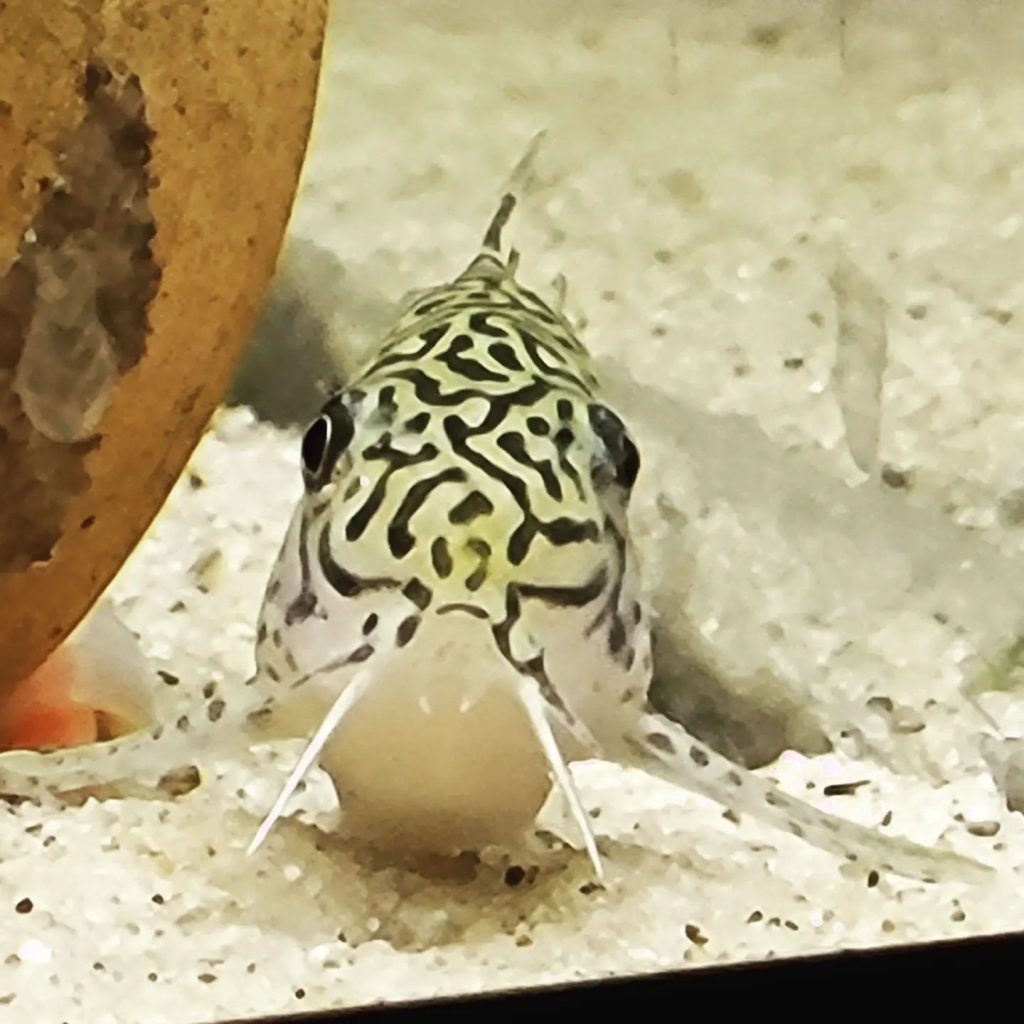
Are False julii cory Fin Nippers?
False Julii Cory catfish are not fin nippers and coexist peacefully with other fish in the aquarium. Their gentle nature is one of their many appealing traits that make them a favored choice among hobbyists. They contribute to the well-being of a community tank without posing a risk to the fins of their tank mates.
Are False julii cory Aggressive To Each Other & Other Fish?
False Julii Corys show no aggression towards each other or other fish species. They are social creatures that thrive in a group setting and often engage in playful interactions with their counterparts. Their compatibility with a wide range of non-aggressive fish makes them excellent community tank members.
Are False julii cory Friendly To Each Other & Other Fish?
These charming catfishes are not only friendly toward one another but also exhibit amicable behavior towards other species in the tank. Their preference for shoaling means they naturally seek companionship and do best in the presence of their own species, while still maintaining a peaceful coexistence with other community fish, snails, and shrimp.
Are False julii cory Schooling Fish?
Indeed, False Julii Corys are schooling fish, preferring to live in groups. In their natural habit, they can be found in large schools, and this behavior is mirrored within the aquarium. Keeping them in numbers (at least five is recommended) will encourage their natural schooling behavior and allow for a more dynamic and engaged tank environment.
Can You Have Just One False julii cory In The Tank?
It is not recommended to house just one False Julii Cory in a tank. Isolated, these social fish may experience stress and potential health issues and can become more timid or even aggressive without their kind for interaction. For the well-being of these corys, it’s essential to maintain them in groups where they can perform their engaging dances and thrive.
Do False Julii cory Need To Be In Groups?
False Julii Corys are at their best and happiest when kept in groups. Isolating them can lead to increased stress levels and a decrease in their natural, joyful behaviors. A school of four or more is optimal, mirroring their natural inclinations to socialize and providing them a richer, more secure life in their underwater domain.
[A table summarizing their Behavior & Temperament]
| Behavioral Trait | Description |
|---|---|
| Fin Nipping | Absent—False Julii Corys are peaceful and do not nip at fins. |
| Aggression | Non-aggressive—They coexist peacefully among themselves and others. |
| Social Behavior | Friendly and shoaling—They prefer living in groups and are sociable. |
| Schooling | Yes—They thrive in groups and exhibit natural schooling tendencies. |
| Solitary Living | Not recommended—Best kept in groups for their social well-being. |
| Group Necessity | Essential—Groups provide security, reduce stress, and enhance activity. |
Keeping False Julii Corys in well-grouped numbers ensures a vibrant, active, and peaceful community tank, and allows these endearing catfish to exhibit their best natural behaviors.
Food & Diet
False Julii Corys, often known as C. trilineatus, exhibit omnivorous feeding habits, requiring a diverse diet to maintain optimal health and vitality. These scavengers are not particularly effective algae eaters and should not solely depend on tank leftovers as their primary diet. To ensure comprehensive nourishment, keepers should provide a mix of sinking pellets, high-quality flakes specifically designed for bottom feeders, coupled with an occasional treat of live or frozen foods.
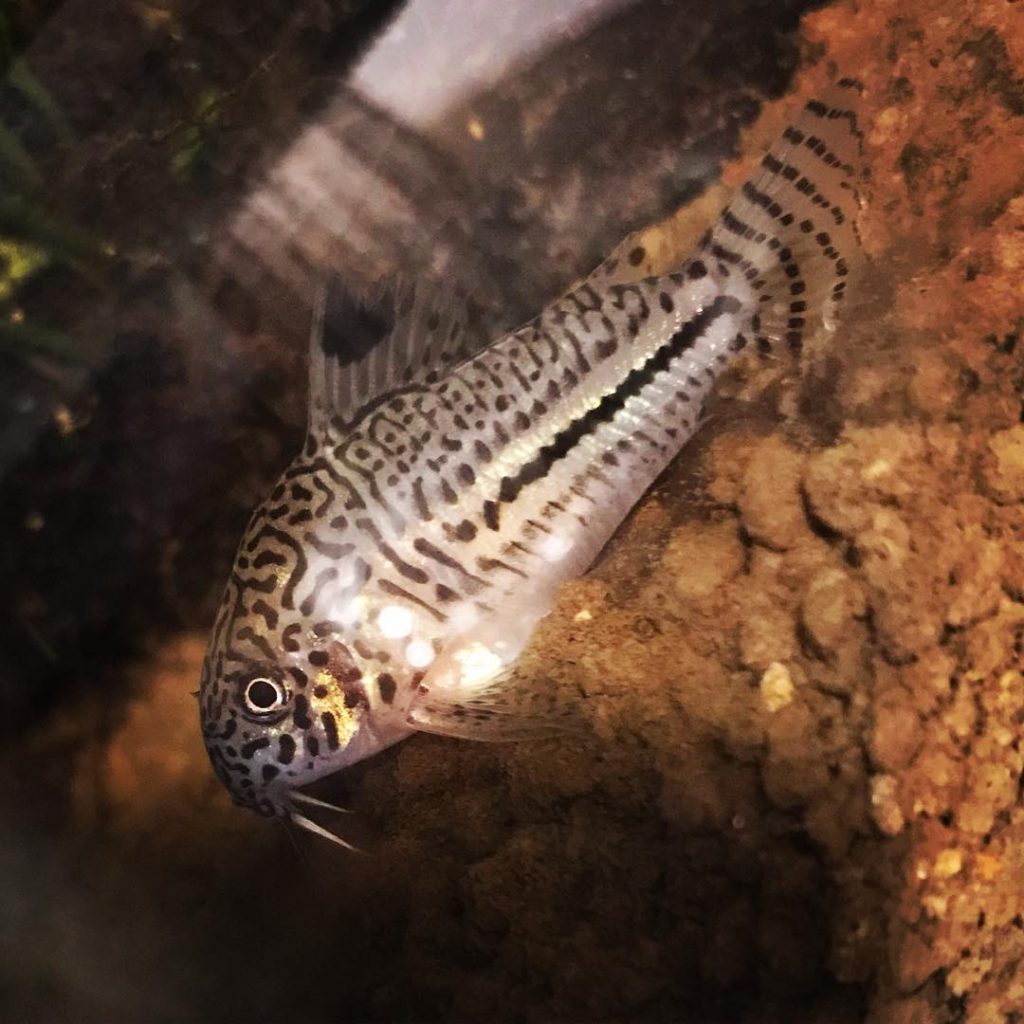
Do False Julii Cory Eat Algae?
False Julii Corys, while being scavengers, are not known to be efficient algae consumers. Although they may graze on algae inadvertently while scavenging for other foods, algae should not be considered a primary food source for them. To support proper nutrition, aquarists should provide these catfish with a variety of foods beyond what naturally grows in the tank environment.
Do False Julii Cory Eat Shrimp?
These gentle scavengers are known to include small crustaceans in their diet and can be fed shrimp as part of their varied feeding regimen. Whether in the form of live or frozen shrimp, such as brine shrimp, they provide a rich protein source that complements the False Julii Cory’s dietary needs. Bloodworms, daphnia, and high-quality flakes also contribute to a balanced diet and should be regularly incorporated into their feeding schedule.
Do False Julii Cory Eat Bloodworms?
Bloodworms are indeed an appropriate and beneficial dietary inclusion for False Julii Corys. Offering these as a part of a rich and varied diet – through live, frozen, or freeze-dried forms – ensures that the False Julii Corys receive the protein they need. This can be particularly important for growing fry or during breeding periods when nutritional demands increase.
Do False Julii Cory Eat Mosquito Larvae?
False Julii Corys are not picky when it comes to live foods, and mosquito larvae make a suitable inclusion in their diet. These nutritious live offerings are a natural part of their diet in the wild and can be introduced to the home aquarium to provide a protein-rich food source that supports the fish’s health and well-being.
Do False Julii Cory Eat Planaria?
Due to their scavenging nature, False Julii Corys may incidentally consume planaria present in the aquarium. While planaria are not a major component of their diet, these catfish may help control mild infestations through their opportunistic feeding habits. However, a well-managed aquarium should not overly rely on fish for pest control; balanced water conditions and proper feeding are also key.
Do False Julii Cory Eat Plants?
False Julii Corys may occasionally ingest plant matter while foraging, as they scuffle through the substrate with their sensitive barbels. However, this is not a deliberate act, and plants are not a significant part of their diet. Their omnivorous inclinations reflect in the need for a variety of foods, which can include some plant-based nutrients along with a stronger focus on animal proteins.
Properly nourishing your False Julii Corys is essential for their health and longevity. It is recommended to follow a regular feeding routine with appropriate quantities to prevent overfeeding and ensure all fish have access to the food. This contributes to the well-being of not just the False Julii Corys but the entire ecosystem of your community tank.
[End of Food & Diet Section]
Sexing: Male vs Female
Determining the sex of False Julii Corys, or Corydoras trilineatus, can be done through visual observation. Mature females tend to be larger and have a more robust build than their male counterparts. From above, females display a rounder and broader body shape, particularly when they are gravid, meaning full of eggs.
Males, on the other hand, are usually smaller in size and possess a slimmer profile, giving them a more streamlined appearance. This size difference can be subtle and may require a keen eye to discern.
During breeding times, sex-related behavioral variances may become evident. It’s not uncommon for males and females to exhibit distinct behaviors as they engage in the spawning process, which also aids in sex identification.
| Male | Female | |
|---|---|---|
| Size | Smaller and slimmer | Larger and stockier |
| Shape | Streamlined body | Rounder, broader body |
| Spawn | Different behaviors | Different behaviors |
By observing these physical and behavioral cues, aquarists can successfully sex their False Julii Corys and create a balanced community tank environment.
False julii cory Tank Mates
When housing False Julii Corys (Corydoras trilineatus), it’s crucial to surround them with compatible tank mates to promote a harmonious aquatic environment. Ensuring they are part of a group with their own species is fundamental, but they also thrive alongside other peaceful fish.
Ideal companions include dwarf cichlids, small tetras, and gentle barbs. These bottom-dwellers can coexist peacefully with non-aggressive catfish varieties, such as particular plecostomus and loach species, and peaceful, small to medium non-cichlid fish.
However, it’s essential to avoid pairing them with aggressive or territorial species, as False Julii Corys are non-confrontational and may be bullied or outcompeted for food. To prevent competition for territory, opt for tank mates that prefer other water column levels, allowing the Corys to forage freely at the bottom.
To foster a stress-free environment, it’s imperative to provide abundant hiding spots for all aquarium residents. This not only helps reduce stress but also creates an aesthetically pleasing and natural setting conducive to the wellbeing of all the fish in the community tank.
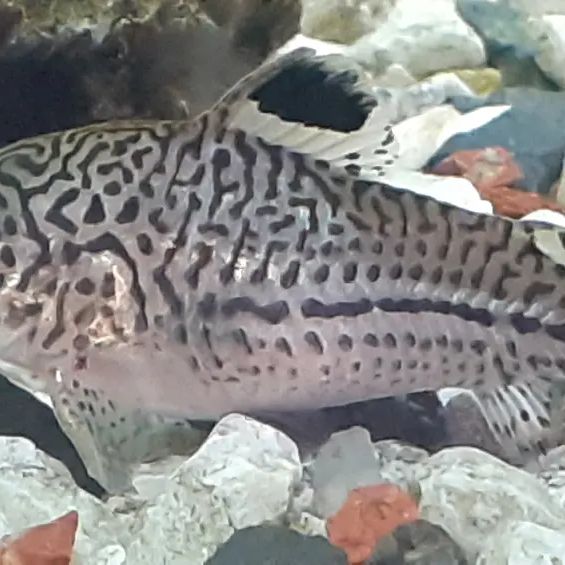
Aquarium Setup
Creating a suitable aquarium setup for False Julii Corys (Corydoras trilineatus) is key to maintaining these social and active bottom dwellers. A well-planned layout caters to their specific needs, ensuring a healthy and stress-free life for these charming little catfish.
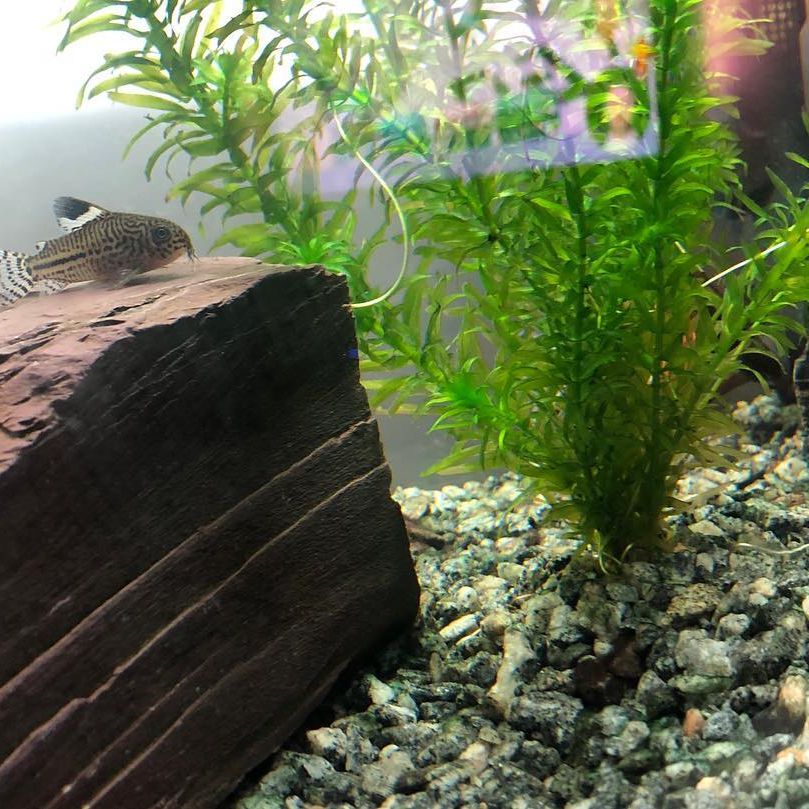
Ideal Tank Size
For a shoal of False Julii Corys, it’s recommended to start with a 20-gallon tank to provide ample room for their active foraging behavior. These catfish appreciate the company of their own kind, so housing them in groups of at least 5 will support their social nature. The tank should be spacious enough to accommodate not only the False Julii Corys but also any compatible tank mates you may want to add, featuring plenty of swimming space along with areas filled with plants and hiding places to mimic their natural habitat.
| Minimum Tank Size | Group Size | Fish Type |
|---|---|---|
| 20 gallons | 5+ | Julii Cory |
| 15 gallons | Up to 6 | False Julii Cory |
| 30 gallons | 6+ (mixed) | False Julii Cory Cats |
A larger tank of 30 gallons or more can enhance the overall environment, allowing for a more varied community of fish and replicating the vastness of the South American waterways from which these cory catfish hail.
Ideal Water Parameters
False Julii Corys require specific water conditions to flourish. They thrive in warm water with temperatures ranging from 78-82°F (25.5-27.8°C), so a stable heater is crucial in maintaining these temperatures. The pH should be kept between 6.0 and 7.5 to match the slightly acidic to neutral water found in their Amazon River habitat. Water quality is of paramount importance; ammonia and nitrite levels should always be at 0ppm, with nitrates kept well under 30ppm. These parameters create an ideal environment:
| Water Parameter | Ideal Range |
|---|---|
| Temperature | 78-82°F |
| pH | 6.0 – 7.5 |
| Ammonia | 0ppm |
| Nitrite | 0ppm |
| Nitrate | <30ppm |
Filtration
A gentle but effective filtration system is essential to keep water clean and free of harmful substances. Sponge filters are recommended for tanks housing False Julii Corys, as they offer both mechanical and biological filtration without creating strong currents. These filters are also safer for small fry, ensuring none are inadvertently drawn into the system.
| Filtration Type | Benefit |
|---|---|
| Sponge Filter | Gentle and safe for fry |
| The Right System | Maintains soft water and stable pH |
| Maintenance | Removes waste and excess nutrients |
Lighting
False Julii Cory Catfish are sensitive to bright light, so it’s essential to simulate subdued lighting conditions.
Common Possible Diseases & Prevention
Corydoras Catfish, including the False Julii Cory, are susceptible to common freshwater ailments such as ich, fin rot, and general bacterial infections. To keep these charming fish healthy, a proactive approach to disease prevention is essential.
Ich, known for causing white spots and erratic behavior, can be traumatic for Corydoras. Fin rot, typically a repercussion of poor water conditions, manifests as deteriorating fins. Maintenance of high water quality and proper nutrition are pivotal in fending off these diseases.
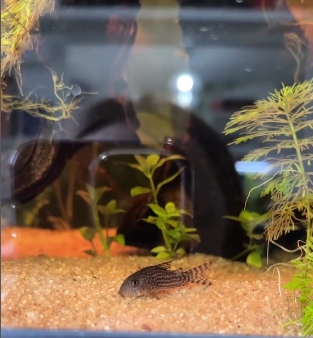
Quarantining new arrivals before introducing them to the community tank is a critical step to prevent the spread of illness. Regular monitoring of the fish for signs of distress or disease allows early intervention, improving chances of recovery.
A balanced diet supports the Corydoras’ immune system, while a clean aquarium reduces stress and exposure to pathogens. Here’s a quick guide to disease prevention strategies:
| Prevention Method | Strategy |
|---|---|
| Water Quality | Regular water changes, good filtration |
| Nutrition | High-quality flake food, occasional brine shrimp |
| Quarantine | Isolate new fish for at least 2 weeks |
| Observation | Check daily for abnormal behavior or signs of disease |
Routine checks and swift action are critical for the well-being of your False Julii Corys and maintaining a harmonious aquarium.
Breeding False julii cory In Aquarium
Breeding False Julii Corys can be a rewarding experience for aquarium enthusiasts. These armored catfish, if nurtured in the right conditions, willingly spawn within their habitat. A diet that includes quality flake food supplemented with brine shrimp primes them for the breeding process.
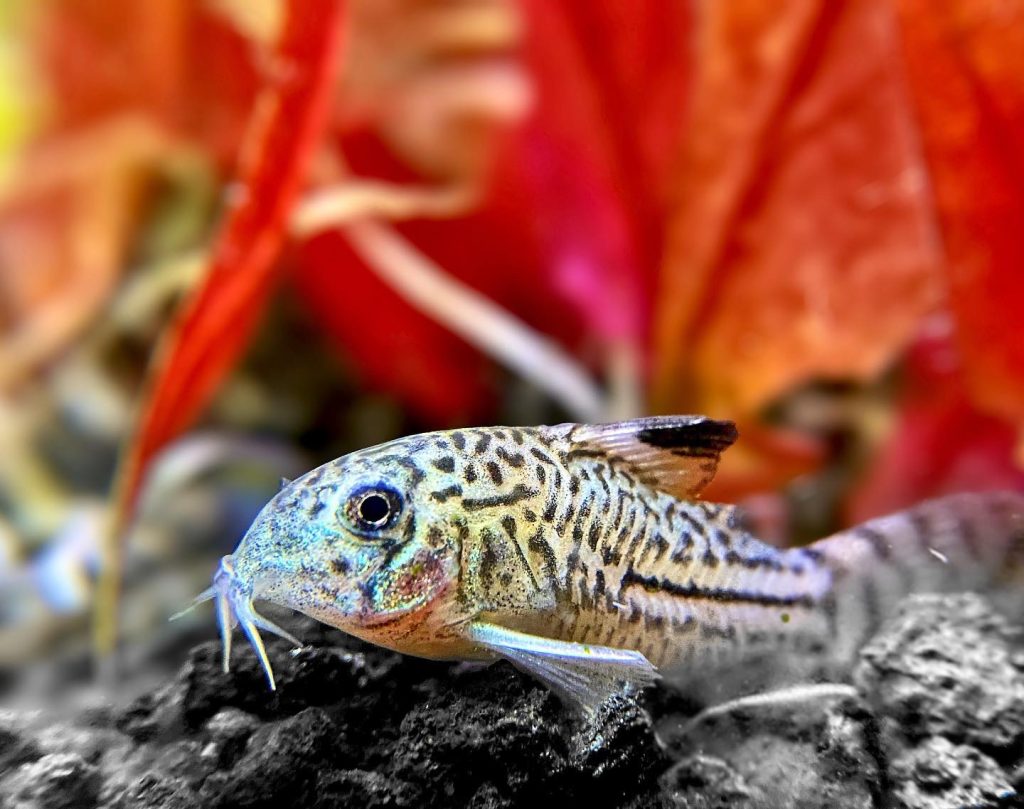
During spawning, Corydoras julii, or False Julii Corys as they are often dubbed, attach clumps of sticky eggs to plant leaves and even the aquarium glass. To ensure the survival of the fry, it is essential to set up a separate spawning tank. This dedicated space allows for better protection and care of the delicate eggs and fry, without the threat of predation by adult fish.
After spawning, promptly remove the adult False Julii Corys to prevent any risk of them consuming their offspring. Juvenile False Julii Corys benefit from a diet that includes sinking pellets and wafers, as well as frozen foods rich in nutrients necessary for healthy development.
Here is a succinct guide to the breeding process:
| Step | Action |
|---|---|
| Diet Optimization | Feed quality flake food and brine shrimp |
| Spawning | Look for clumps of eggs on leaves and glass |
| Spawning Tank | Transfer eggs to a separate, protected tank |
| Adult Removal | Remove parents to prevent egg predation |
| Juvenile Feeding | Provide high-quality sinking pellets and frozen foods |
Consistent care and close monitoring can make breeding these unique and sociable Corydoras a successfully fulfilling endeavor.

